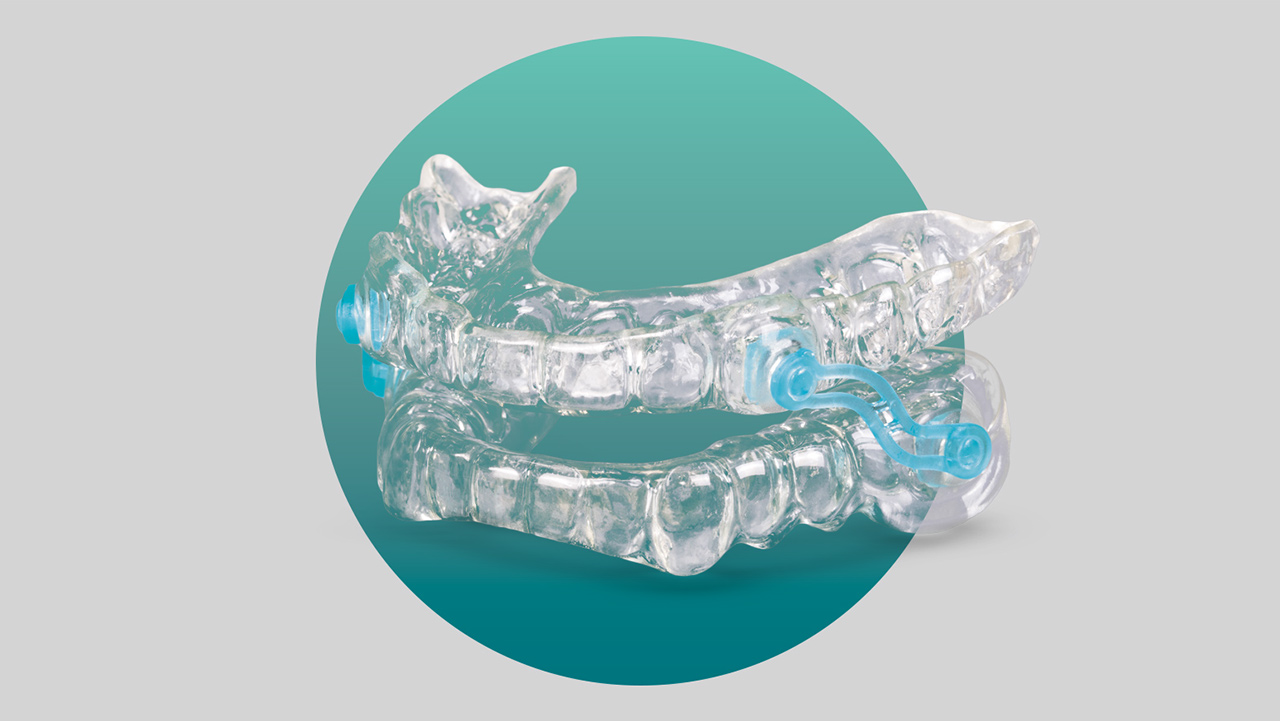2201 Dupont Dr., Irvine, CA 92612
© 2025 Glidewell. All rights reserved.
800-854-7256 USA
As many as 50% of patients snore. Learn how to choose the treatment that helps them long term.

The best anti-snoring device is one that the patient will use every night, all night. In the medical literature, this is known as compliance. In order to test compliance, the patient must first receive the device. This is referred to as accessibility.
The scale that we use to judge snoring devices includes compliance, access and affordability. These considerations are in addition to clinical outcome. Does it stop the snoring? If the device is difficult to access because of a complicated diagnostic protocol or the patient cannot comfortably use the device all night long, then even the most effective treatment cannot be considered the best therapy.
Snoring is due to a partially collapsed airway. The airway relaxes and the tissues lose their tone and vibrate as the patient inhales and exhales. The sound that is created is snoring. Nearly everyone snores now and then, but for some people it can be a chronic problem, which can sometimes also indicate a serious health condition called obstructive sleep apnea (OSA).
If snoring is accompanied by any of the following issues, it may warrant consultation with a dentist or physician for OSA evaluation:
In children, symptoms may include a poor attention span, behavioral issues or poor performance in school.
OSA often is characterized by loud snoring followed by periods of silence when breathing stops or nearly stops. Eventually, this reduction or pause in breathing may signal the person to wake up, and the patient may awaken with a loud snort or gasping sound.
For this post, we will focus only on snoring, which is a primary complaint and the reason most patients seek treatment for sleep-disordered breathing.
Lifestyle Changes
Lifestyle changes are perhaps the most important and effective treatments for snoring. To treat snoring, doctors are likely to first recommend lifestyle changes, such as the following:
Oral Appliances
Oral appliances are custom-fit dental mouthpieces that are made by a dentist. The most popular design is called a mandibular advancement device (MAD). The MAD engages the upper and lower teeth and, using adjustment arms, positions the jaw slightly forward during sleep. This forward position serves to put tension on the muscles and ligaments of the airway to keep them from collapsing and causing the snoring sound.
See the example below. The adjustment arms of the Silent Nite® Sleep Appliance work like a hinge to improve patient comfort. This MAD allows the patient to talk, drink water and take medication if necessary. When the patient is wearing the oral appliance, it is not visible to the bed partner. It makes no sound, and when titrated correctly, neither will the patient.
 The Silent Nite Sleep Appliance treats snoring and sleep apnea by positioning the jaw slightly forward during sleep.
The Silent Nite Sleep Appliance treats snoring and sleep apnea by positioning the jaw slightly forward during sleep.
When measured against the above scale, oral appliances for snoring rate as follows:
Continuous Positive Airway Pressure (CPAP)
Continuous positive airway pressure (CPAP) and bilevel positive airway pressure (BiPAP) therapeutic devices blow air at a consistent pressure into the airway, providing a pneumatic splint for the airway, sufficient that the airway does not collapse during sleep. A CPAP machine is placed on the bedside and blows air through a hose to a mask or nose piece to deliver air to the airway. CPAP, like oral appliances, must be used in order to provide an effect. Common problems with CPAP include mask leaks, as well as patients experiencing trouble falling asleep, stuffy nose and dry mouth.
When measured against the above scale, note the following:
There are various options available to treat patients for snoring. Whether it involves lifestyle changes, sleep appliances, CPAP, BiPAP, or a combination of treatments, the ideal choice is a solution that provides your patient with high-quality sleep each and every night.
To learn more about snoring, OSA, and a straightforward protocol for screening and treating patients, visit glidewelldental.com/pmad.
Send blog-related questions and suggestions to hello@glidewell.com.


